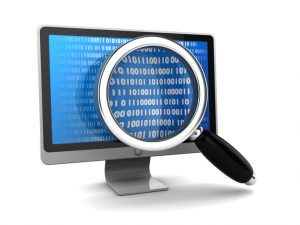The Discovery Gods Have Given You A Gift
Proportionality is a powerful tool if you know how to use it.
 Proportionality — it’s the new buzzword in ediscovery, and one you need to be aware of if you have any role in the discovery process. It’s also your best weapon to rein in overbroad, over-reaching discovery requests, OR to require a producing party to do what they are supposed to in terms of form and manner of production. But don’t think you can just throw it out at any time and have it stick — judges are onto that and like any bad argument, you’ll end up losing that argument and possibly undermining your other discovery disputes.
Proportionality — it’s the new buzzword in ediscovery, and one you need to be aware of if you have any role in the discovery process. It’s also your best weapon to rein in overbroad, over-reaching discovery requests, OR to require a producing party to do what they are supposed to in terms of form and manner of production. But don’t think you can just throw it out at any time and have it stick — judges are onto that and like any bad argument, you’ll end up losing that argument and possibly undermining your other discovery disputes.
So what is proportionality?
Proportionality is the check and balance of discovery — it focuses on the marginal utility of the discovery sought. Vaigasi v. Solow Mgmt. Corp.,, 2016 WL 616386 (S.D.N.Y. 2016) (citing Zubulake v. UBS Warburg, LLC, 217 F.R.D. 309, 322-23 (S.D.N.Y. 2003). Under Rule 26 of the FRCP (numbers added for clarity):

Early Adopters Of Legal AI Gaining Competitive Edge In Marketplace
Parties may obtain discovery regarding any nonprivileged matter that is relevant to any party’s claim or defense and proportional to the needs of the case, considering (1) the importance of the issues at stake in the action, (2) the amount in controversy, (3) the parties’ relative access to relevant information, (4) the parties’ resources, (5) the importance of the discovery in resolving the issues, and (6) whether the burden or expense of the proposed discovery outweighs its likely benefit. Information within this scope of discovery need not be admissible in evidence to be discoverable.
So, what does that mean? Practically, it means two things: 1) your requests need to be narrowly tailored to seek information that is both relevant and proportional, and 2) your responses cannot include boilerplate objections.
When the Federal Judiciary Committee amended the FRCP effective December 1, 2015, they did so with the specific intent of putting proportionality front and center as a basis to guide parties and the courts on how to control creeping and downright ludicrous costs in ediscovery.
But, as many judges have pointed out since the new rules became effective, proportionality is not new. As Magistrate Judge Pitman pointed out in Vaigasi, “proportionality has become `the new black’,… in discovery litigation, with parties invoking the objection with increasing frequency.”
Sponsored

Is The Future Of Law Distributed? Lessons From The Tech Adoption Curve

Navigating Financial Success by Avoiding Common Pitfalls and Maximizing Firm Performance

Early Adopters Of Legal AI Gaining Competitive Edge In Marketplace

The Business Case For AI At Your Law Firm

And, while Judges are quick to note that proportionality is not new — it is for many litigants who have simply never harnessed its power. This is your wake up call.
When does proportionality come into play?
Immediately and continuously throughout discovery. As you evaluate the scope of preservation for your client, you should constantly be weighing the cost of preserving and collecting sources and date ranges of data vs. the relevance of the data in the litigation. Every decision that you make — scoping preservation and discovery, drafting discovery requests, asking for depositions — should be with a thought to whether it is proportional under the six factor test.
But keep in mind that what’s proportional for your case is not the same for the other side — you have to do the analysis both ways. The data that your client needs to support its case should be a more cohesive subset, but the other side, who doesn’t know your client’s business like you do, will want a much broader set of discovery.
To use proportionality effectively, you are going to have to communicate and cooperate with the other side. Yes, we are back to that. You need to be able to explain how the sources of data work, and why the cost of obtaining data is onerous or will not produce relevant data. In short, you’re going to have to demonstrate why a request is not proportional, and to do that, you are going to have to learn more about the technology, its capabilities, and guide the opposing party on what makes sense to get them the information they are entitled to without an onerous burden to your client.
Sponsored

Legal AI: 3 Steps Law Firms Should Take Now

The Business Case For AI At Your Law Firm

Be careful, though. Proportionality is not a “get out of jail free” card. Judges have rejected claims of non-proportional requests where the discovery requests are targeted. In Labrier v. State Farm Fire & Cas. Co., 2016 WL 2689513 (W.D. Mo. 2016), the plaintiff requested data from a database in a dispute over depreciation of labor costs on a coverage matter. As a means to streamline discovery, plaintiff proposed that defendant either provide a list of data fields that were available in both defendant’s and defendant’s vendor’s databases or allow plaintiff remote access to these databases. Defendant objected on proportionality grounds, and both the Special Master and the Court agreed that the information was both relevant and proportional:
[T]he Special Master had not abused his discretion where the issues at stake were at the very heart of this litigation, where plaintiff had no alternative way to access the information, where plaintiff was an individual and defendant a corporation with a national presence and sophisticated access to data and where, as discussed above, the benefit of the discovery outweighed the burden particularly in light of defendant’s refusal to permit an outsider to access its computer system or even provide complete lists of its data fields.
Proportionality is a tool that benefits both the serial litigants and the individual plaintiff — but you have to know how to use it. Start reading up on case law to get a better sense of how you can use it effectively. A word of caution though — it is not to be thrown about haphazardly. In the words of the grail keeper from The Last Crusade — use it wisely.
 Kelly Twigger gave up the golden handcuffs of her Biglaw partnership to start ESI Attorneys, an eDiscovery and information law Firm, in 2009. She is passionate about teaching lawyers and legal professionals how to think about and use ESI to win, and does so regularly for her clients. The Wisconsin State Bar named Kelly a Legal Innovator in 2014 for her development of eDiscovery Assistant— an online eDiscovery playbook for lawyers and legal professionals. When she’s not thinking, writing or talking about ESI, Kelly is wandering in the mountains of Colorado, or watching Kentucky basketball. You can reach her by email at Kelly@ediscoveryassistant.com or on Twitter: @kellytwigger.
Kelly Twigger gave up the golden handcuffs of her Biglaw partnership to start ESI Attorneys, an eDiscovery and information law Firm, in 2009. She is passionate about teaching lawyers and legal professionals how to think about and use ESI to win, and does so regularly for her clients. The Wisconsin State Bar named Kelly a Legal Innovator in 2014 for her development of eDiscovery Assistant— an online eDiscovery playbook for lawyers and legal professionals. When she’s not thinking, writing or talking about ESI, Kelly is wandering in the mountains of Colorado, or watching Kentucky basketball. You can reach her by email at Kelly@ediscoveryassistant.com or on Twitter: @kellytwigger.








